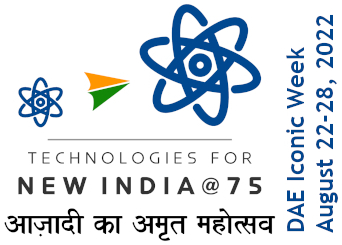Biographical Memoirs :: MEGHNAD SAHA
Saha early realized the growing importance of nuclear physics and the impact it was likely to make on the country's scientific and industrial progress. He felt that in the context of current developments there was a real and urgent need for a separate institution of nuclear physics devoted to post-graduate study and research. The result of his dedicated and untiring efforts was the Institute of Nuclear Physics in Calcutta, founded in April 1948 (and formally opened in 1950). The Institute is attached to the University. It runs a post-graduate course, and its research activities cover, amongst other subjects, beta-ray spectroscopy, nuclear resonance, and the use of radioactive isotopes in medicine. There is also an active theoretical group; a separate biophysics section and an instrument section. It has a 38-inch cyclotron - the magnet and some of the other critical parts were obtained from Lawrence's Laboratory in Berkeley. Saha was elected Honorary Director of the Institute for life. After his death, the Institute befittingly has been named after him.
Though the Institute of Nuclear Physics took much of Saha's energy and time, yet there was another institution, the Indian Association for the Cultivation of Science, which was always in his mind, and for its reorganization and expansion he worked hard and ceaselessly. The Association, the oldest institution devoted to science and its cultivation in modern India, was founded in 1876 by a private medical practitioner of Calcutta, Dr Mahendra Lal Sircar. He intended it `to combine the character, scope and objects of the Royal Institution of London and of the British Association for the Advancement of Science. As is well known the Raman effect was discovered in the laboratories of the Association in 1928. At the time Raman was Palit Professor of the University and also the honorary head of the Laboratories of the Association.
Saha, shortly after his coming to Calcutta as Palit Professor in 1938 (Raman left Calcutta in 1932) began to take a keen interest in the activities of the Association. He was elected the Honorary Secretary in 1944, and in 1946 he was elected the President of the Association. He was succeeded by J. C. Ghosh in 1950. The large-scale expansion in the research activities of the Association which has taken place in recent years is almost entirely the result of Saha's initiative, resourcefulness and devoted work. The Association has now a new building in Jadavpur (Calcutta) where it moved in 1951 from 210 Bowbazar Street.
In 1952 the post of a full-time Director of the Laboratories of the Association was created and the choice of the first Director obviously fell on Saha. He accepted the appointment in 1953 on retirement from the Palit Chair of the University which he held for fifteen years. He was Director of the Laboratories of the Association and Honorary Director of the Institute of Nuclear Physics at the time of his death in 1956. Saha was the General President of the twenty-first annual session of the Indian Science Congress Association held in Bombay in January 1934. The first part of his address dealt with some of the current astrophysical problems, and in the second part he advocated the formation of an All-India Academy of Sciences. In the same address he drew pointed attention to the serious problem - still largely unsolved - of recurring disastrous floods in many Indian rivers, and stressed the need for a River Research Laboratory to make a scientific study of the complex problems involved in flood control and river utilization generally. He was one of the first in India to realize the great importance of this subject. He had personal experience of some of the catastrophic floods in the Damodar Valley area (Bengal), and he often took an active part in relief measures organized to deal with them. The writings of Saha, many of which appeared in Science and Culture, on flood control and harnessing the water of the rivers were to no small extent responsible in creating a public awareness of these problems. In 1943 the Bengal Government appointed the Damodar Flood Enquiry Committee. Saha was a member of the Committee, and his contribution was widely recognized as a vital one. Largely as a result of the committee's report came, eventually, the multipurpose Damodar Valley Project (very much on the lines of the Tennessee Valley Authority in the U.S.A.) which has been the forerunner of the Bhakra-Nangal and other multipurpose river projects in India. The establishment of the River Research Institute (Haringhata, Calcutta) was also, to no small extent, the result of Saha's initiative and efforts.




